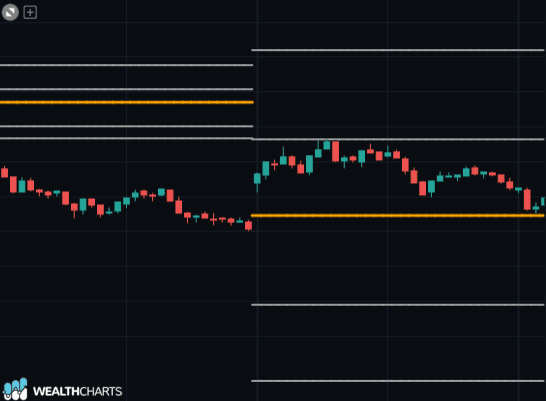Categories
About UsHow to get startedAccount AccessBrokers and TradingScannersResearch ToolsCommunityStocksOptionsFuturesAlertsPivot Points- Classic - Indicator Formula
Pivot Points- Classic
Pivot Points were developed by floor traders are significant levels that traders and investors can use to help them determine changes or continuations within the trading day. The pivot points are derived from the previous days high, low and close.
When the price of an asset is above the Pivot Point during the trading day, this is considered to be a bullish sign.
When the price of an asset is below the Pivot Point during the trading day, this is considered to be a bearish sign.
Additionally, there are support and resistance levels that are derived from the Pivot Point: Support 1 (S1), Support 2 (S2) and Resistance 1 (R1), Resistance (R2).
They are calculated as follows:
Pivot Point ( P ) = ( High + Low + Close ) / 3
Support 1 ( S1 ) = ( P * 2 ) - High
Support 2 ( S2 ) = P - ( High - Low )
Resistance 1 ( R1 ) = ( P * 2 ) - Low
Resistance 2 ( R2 ) = P + ( High - Low )
The S1, S2, and R1, R2 levels can be used as support and resistance for reversals but can also be used as a continuation of the trend. If an asset's price is rising and moves above R1, it could help signify the uptrend and a continuation to R2 would be possible.
